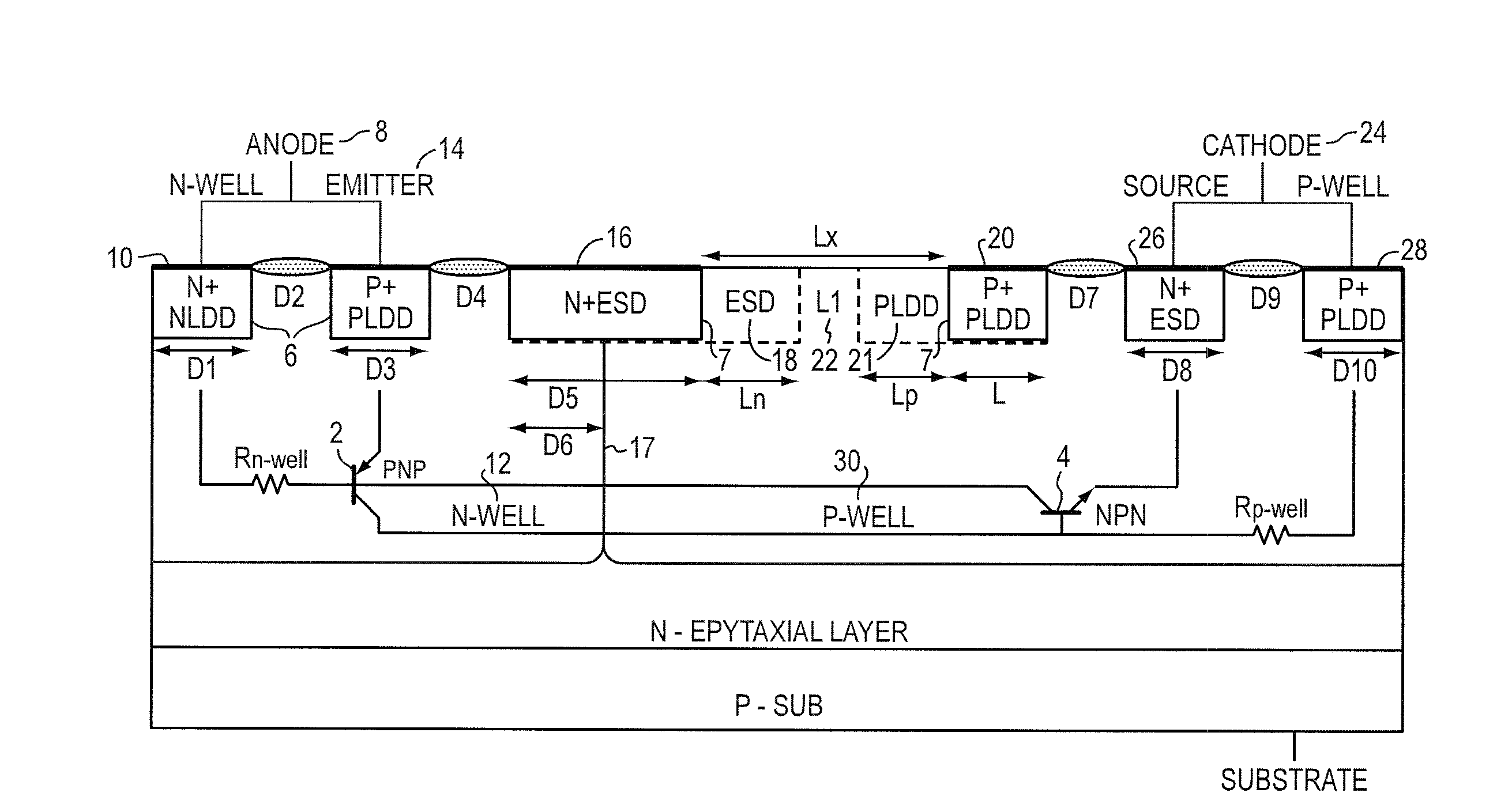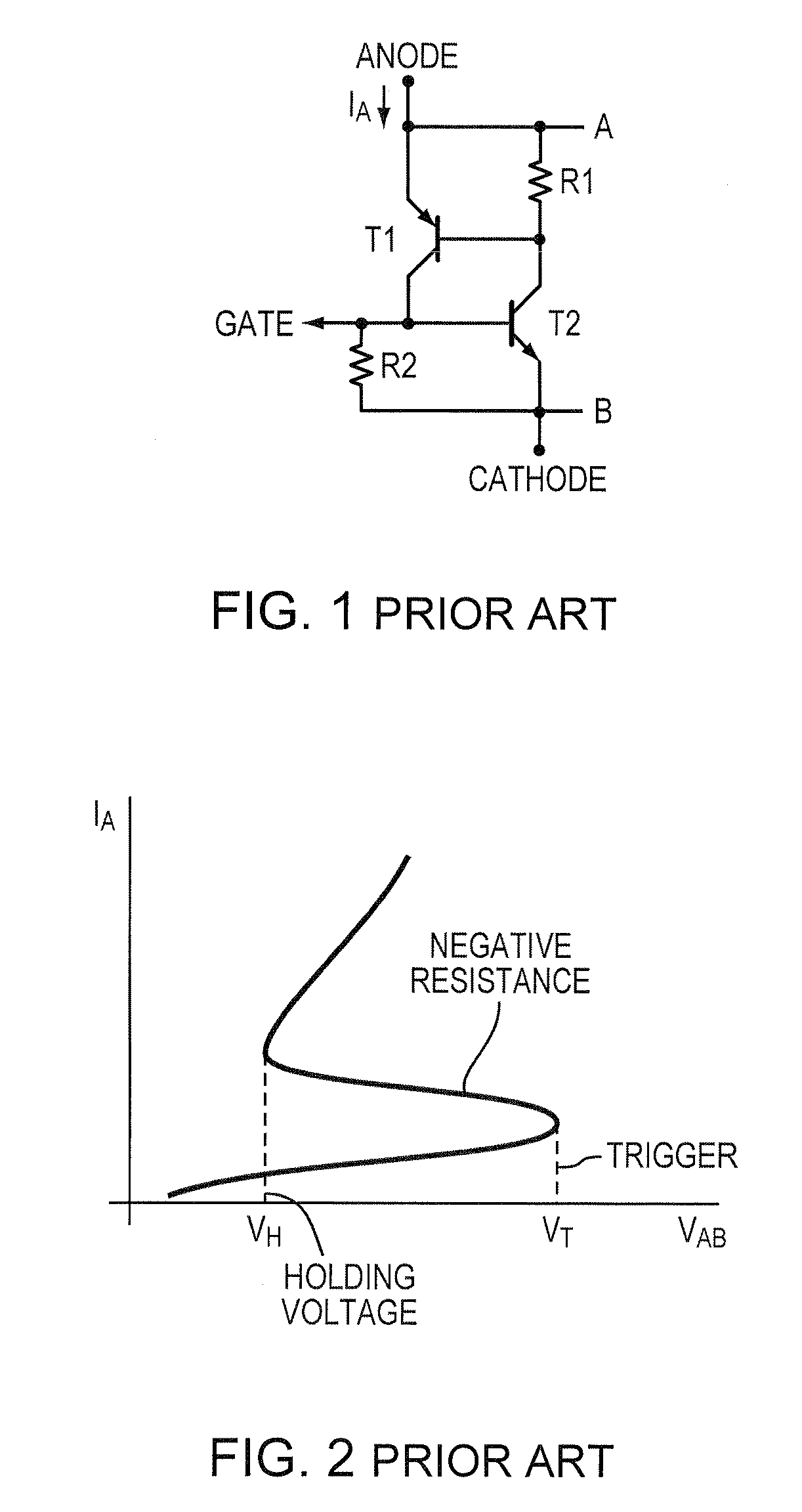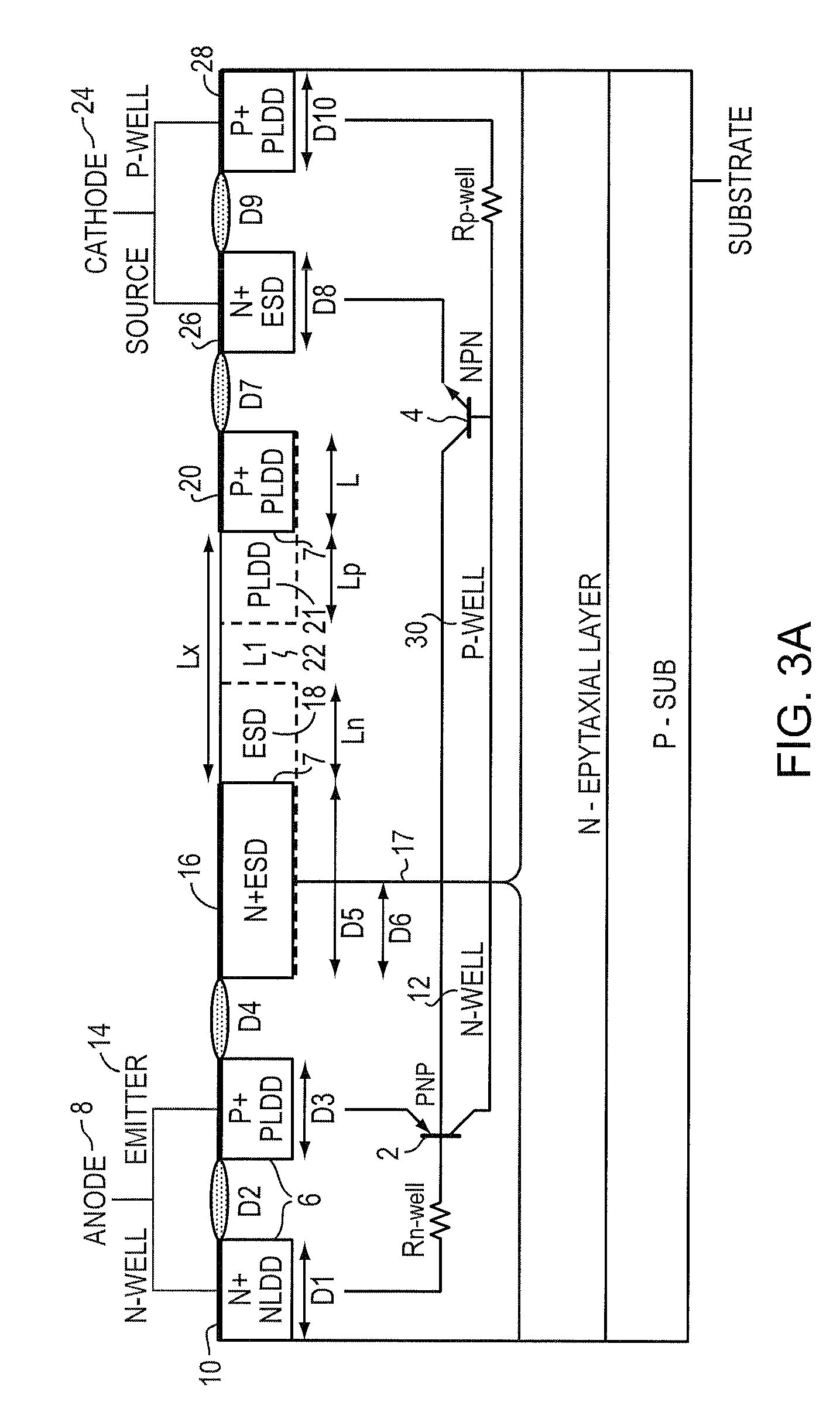Un-assisted, low-trigger and high-holding voltage scr
a low-trigger, high-holding voltage technology, applied in the field of scrs, can solve problems such as known problems that continue to exist in the prior art circui
- Summary
- Abstract
- Description
- Claims
- Application Information
AI Technical Summary
Benefits of technology
Problems solved by technology
Method used
Image
Examples
Embodiment Construction
[0031]The above drawings and the text herein disclose a two terminal structure (no external trigger) for an SCR-type circuit with a trigger voltage as low as 8V. Moreover, the holding voltage may be tunable from about 5V to about 7.5V, while maintaining the trigger voltage essentially constant. That is, the holding voltage may be set from +5V to +7.5 volts while the trigger voltage remains at about +8V.
[0032]In FIG. 3A, a cross section of a protective device represents the bipolar PNP 2 and NPN 4 transistors approximately where they exist. Although the arrangement of the PNP 2 and the NPN 4 in FIG. 3A is similar to the schematic in FIG. 1, the differences in structure, dimensions and relative doping levels provide different advantageous characteristics. In the following descriptions, the dimensions, doping levels and materials used, the relative locations of the elements, and the resulting parameters and characteristics are illustrative. Those skilled in the art will be able to make...
PUM
 Login to View More
Login to View More Abstract
Description
Claims
Application Information
 Login to View More
Login to View More - R&D
- Intellectual Property
- Life Sciences
- Materials
- Tech Scout
- Unparalleled Data Quality
- Higher Quality Content
- 60% Fewer Hallucinations
Browse by: Latest US Patents, China's latest patents, Technical Efficacy Thesaurus, Application Domain, Technology Topic, Popular Technical Reports.
© 2025 PatSnap. All rights reserved.Legal|Privacy policy|Modern Slavery Act Transparency Statement|Sitemap|About US| Contact US: help@patsnap.com



